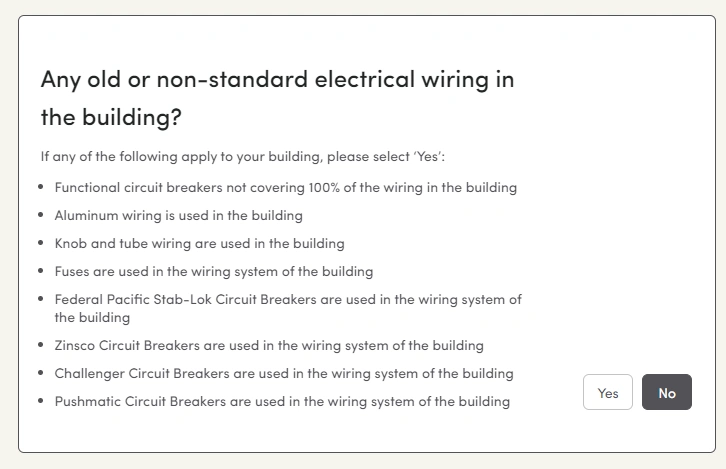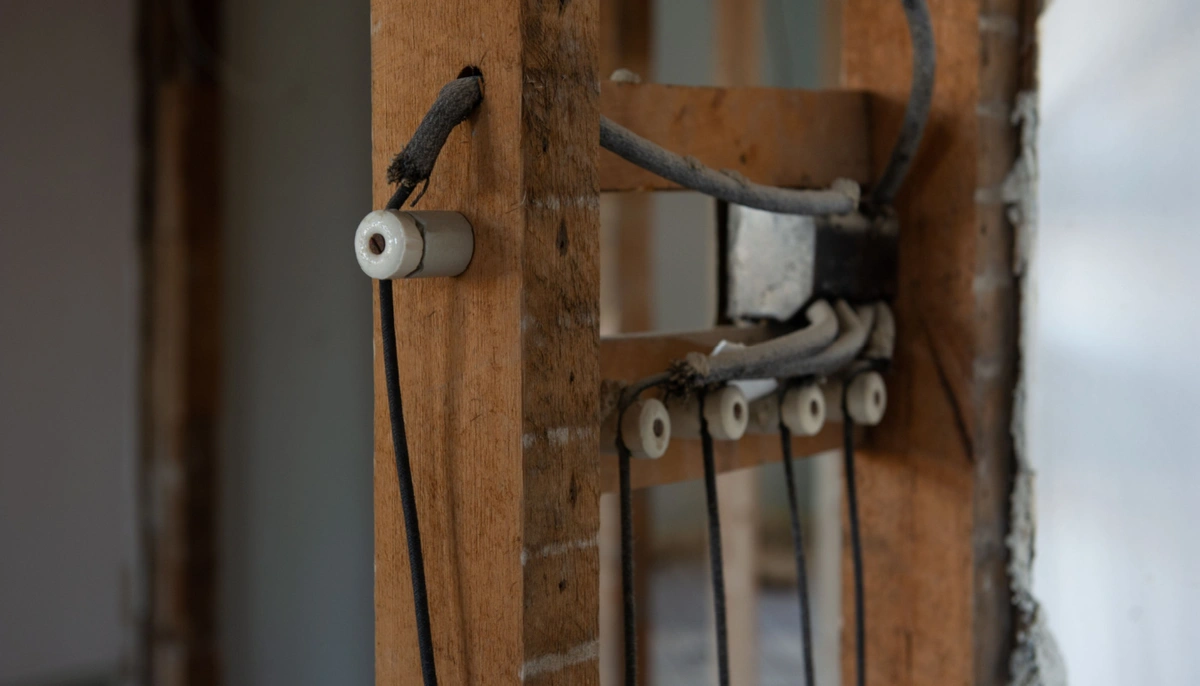Your insurance company will always ask what type of wiring your property has. Typical questions are what kind of circuit breakers you have, or how often it is serviced or inspected by a licensed electrician.
If your property has an outdated wiring system like knob-and-tube, don’t be surprised if your insurance carrier will refuse to insure the property. At best, you will probably pay a very high premium rate which could be very costly in the long run. This is because knob-and-tube comes with a much higher risk of fires or other accidents, or in insurance terms, risk of claims.
Why is knob-and-tube wiring a problem for getting insurance?
Older wiring that is made of materials like aluminum or knob-and-tube is more prone to issues like shorts, fires, and other problems, which can be costly for insurance carriers to repair or replace. Newer wiring that is made of materials like copper and is properly installed and maintained is less likely to have issues, which can result in lower insurance costs for the property owner.
There are also indirect risks to having knob-and-tube wiring. If the wiring is outdated, damaged, or not properly maintained, it can present a higher risk of and potential accidents such as
On the other hand, if the wiring in a property is in good condition and has been regularly maintained and updated, it can result in lower insurance costs.
In addition to the type and condition of the wiring, insurance carriers may also consider other factors when determining insurance premiums related to wiring. This can include the age of the property, the type of construction, and the location of the property, as well as any other potential hazards or risks that may be present.

What is knob-and-tube wiring, and why is it potentially so dangerous?
Knob and tube wiring was the standard electrical wiring method from the 1880s to 1940s. While knob-and-tube wiring is not illegal, it is not permitted to install this type of wiring system in newer homes.
Knob-and-tube wiring consists of ceramic knobs and tubes that are used to hold and protect the electrical wires as they run through the walls, ceilings, and floors of a home. The main reasons why this wiring system is considered potentially dangerous are:
- Age: Knob and tube wiring was primarily used in homes built before the 1950s, and over time, the insulation on the wires can deteriorate, leading to exposed wires and a higher risk of electrical fires.
- Lack of Grounding: Knob-and-tube wiring does not have a ground wire, which means that if there is a problem with the wiring, there is no way for the electrical current to be safely discharged to the ground.
- Insulation Issues: The insulation used on knob-and-tube wiring is often made of rubber or other materials that can dry out, crack, or become brittle over time, exposing the wires and creating a fire hazard.
- Limited Circuit Capacity: Knob-and-tube wiring was designed for homes with fewer electrical appliances and devices, making it ill-suited to handle the increased electrical demands of modern homes.
- No Arc Fault Circuit Interrupters: Knob-and-tube wiring lacks the protection of arc fault circuit interrupters, which can detect and interrupt electrical arcing before it causes a fire.
- Lack of Safety Standards: Knob-and-tube wiring does not meet current safety standards and codes, which means that it is not considered safe for use in modern homes.

Do I need to replace my knob and tube wiring to get insurance?
While there may not be any legal requirements to replace knob-and-tube wiring, it is highly recommended that you do so. Getting insurance for a property that has knob-and-tube wiring may be very challenging, and many insurance providers refrain from insuring properties that has this wiring system. Those who do will most likely charge a very high premium, making the yearly insurance costs a big expense.
The cost of replacing knob-and-tube wiring ranges anywhere from $3500 - $9000, depending on the size and the complexity of the system. While it may be costly, it is a one-time expense that will potentially pay for itself over the years since due to its impact on insurance costs. Remember that having knob-and-tube wiring could also prevent you from obtaining insurance,
and the safety and peace of mind that comes with having an up-to-date electrical system is usually worth the investment.
Any work done on your electrical system should be carried out by a qualified professional. Below is a video made by Benjamin Sahlstrom, an electrician apprentice and known YouTube creator, that shows how knob-and-tube wiring is abandoned and general tips for how to deal with knob and tube wiring.
Overall, it is important to be aware of the impact that wiring can have on insurance costs, as it can be a significant factor in the overall cost of insurance for a property. By ensuring that the wiring in your property is in good condition, properly installed, and regularly maintained, you can help to reduce your insurance premiums and protect your property from potential risks and hazards.
Living with K&T wiring
For those who still have knob and tube wiring in their properties, there are some important precautions set forward by the International Association of Certified Home Inspectors:
- Have the system evaluated by a qualified electrician. Only a professional will be able to confirm that the system was installed and modified correctly
- Do not run an excessive amount of appliances in the home at once, as this can cause a fire.
- Replace all outlets with ground fault circuit interrupter (GFCI) outlets. These are 3-prong outlets with a built-in reset button.
- If the wiring is brittle or cracked, it must be replaced as soon as possible.
- K&T wiring should not be used in bathrooms, laundry rooms, kitchens or outdoors. If used in these locations, it should be grounded.
- Carefully remove any insulation found surrounding K&T wires
- Prospective home buyers should get an estimate of the cost of replacing K&T wiring. They can use this amount to negotiate a cheaper price for the house.

